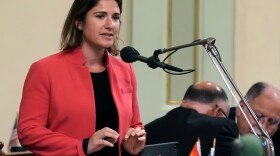A new UC San Diego study finds fighting climate change will not ease the pollution burden shouldered by some communities of color.
The research found implementing climate-friendly policies may deliver cleaner air overall, but those policies have the potential to increase the pollution burden on climate justice communities, typically neighborhoods of color which have long suffered disproportionately from air pollution.
San Diego communities located near the city’s industrial waterfront, like Barrio Logan, National City and Sherman Heights, have long carried a larger pollution burden. So has San Ysidro, which is a major transportation corridor.
The state has long recognized that those communities are much more polluted than other parts of San Diego County.
Researchers say the new study in the current edition of the journal Proceedings of the National Academy of Sciences measured how different strategies to reduce climate change impact air pollution.
“When implementing these climate policies — things that are meant to target greenhouse gasses — what will the effect be on those conventional air pollutants which are often emitted at the same time?” said Pascal Polonik, a recent graduate of the Scripps Institution of Oceanography.
Climate change policies focus on reducing carbon dioxide emissions that increase global warming.
Air pollution focuses on things like tailpipe emissions, which put health threatening particulate matter into the air.
Both are related, but also distinct.
“One is greenhouse gas emissions, which we care about because of climate change,” Polonik said. “And the other set is sort of these conventional pollutants, like particulate matter is the one we’re looking mostly at, which has sort of direct negative consequences.”
Researchers used simulations to gauge the impact of five greenhouse gas emission reduction pathways that also measured the reduction in air pollution.
The pathways focus plans to reduce emissions equally across the country in low-income neighborhoods that are cost efficient, that focus on communities of color and strategies that reduce emissions in areas with the worst air quality.
A key finding shows the impact of reducing greenhouse gas is not shared equally and communities of color can reap fewer benefits.
One strategy that does help ease the environmental inequity is cutting car emissions by taking internal combustion engines off the road.
“The more obvious example would be electric cars, so they don’t have tailpipe emissions,” Polonik said. “That means those on-road emissions are going to decrease … We said, what happens if we converted to electric vehicles? Fundamentally it’s the same as just taking cars off the road.”
Polonik said the nation’s racial inequities are deeply ingrained and persistent.
Practices like redlining and building freeways contain and split communities in ways that are not easily undone.
The findings, however, suggest there are ways to reduce greenhouse gasses without exacerbating the air pollution burden carried by communities of color.








